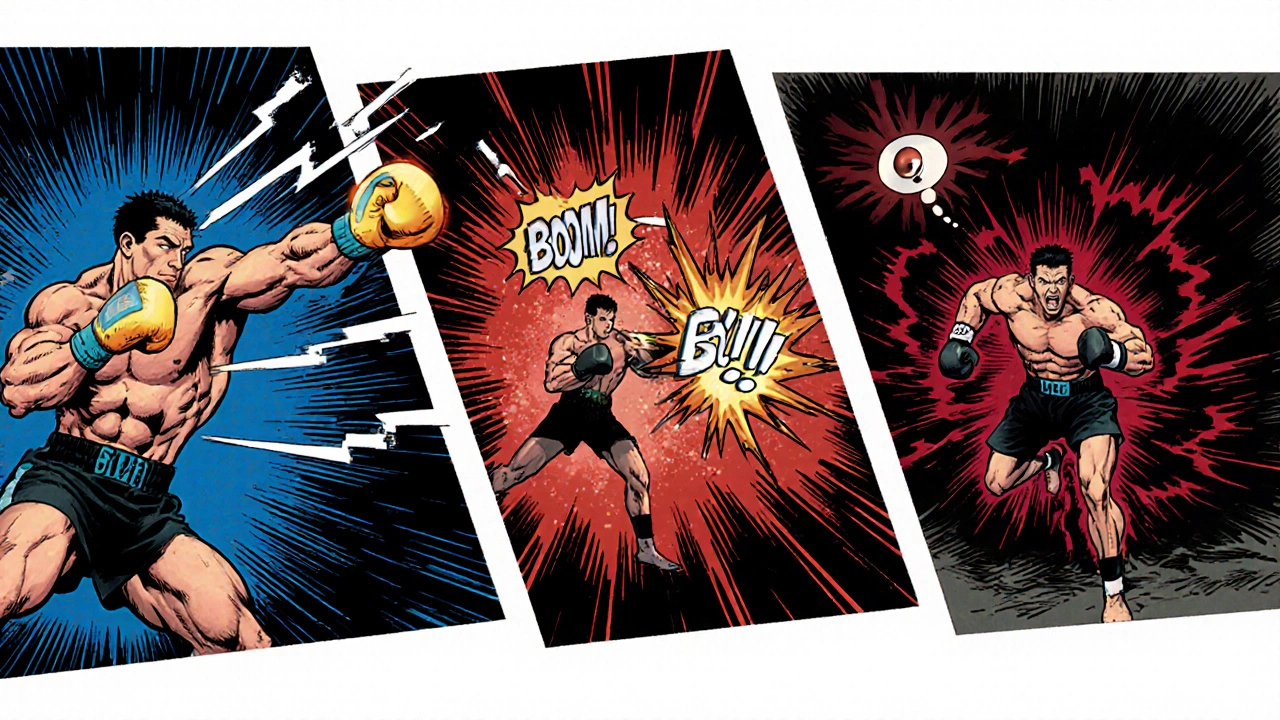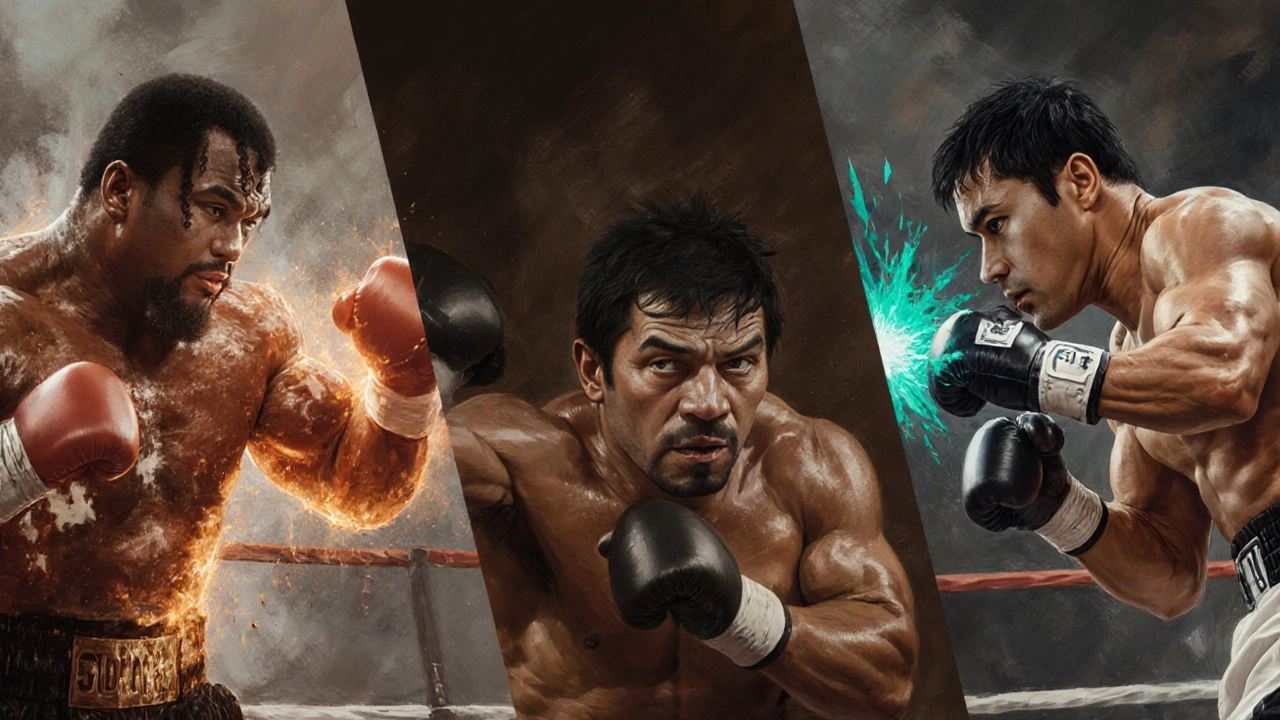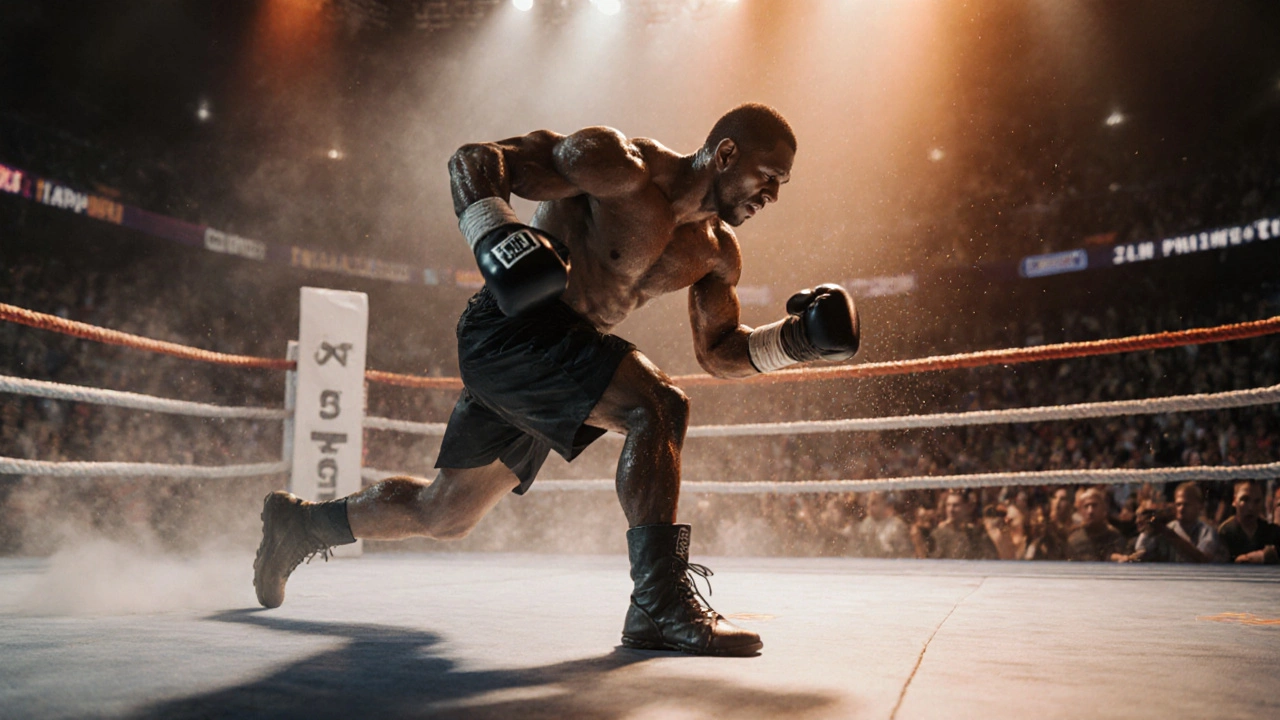Pressure Fighter Performance Calculator
Assess Your Pressure Fighting Style
Enter your stats to see how your pressure fighting style compares to professional fighters like Tyson and Pacquiao.
Pressure Fighter Profile
Your Score
Overall Pressure Score:
Your Style Match
Best Match:
Performance Analysis
Pro Comparison
Key Takeaways
- Pressure fighting (also called swarming) is widely regarded as the most aggressive boxing style.
- It relies on relentless forward motion, close‑range punches, and overwhelming volume.
- Famous pressure fighters include Mike Tyson, Joe Frazier, and Manny Pacquiao.
- Training for pressure fighting emphasizes stamina, head‑movement drills, and body‑shot combinations.
- While deadly, the style can expose defensive gaps if not paired with solid fundamentals.
When fans ask, “most aggressive boxing style?” they’re usually looking for the approach that throws the highest punch volume, shortens the distance fast, and forces the opponent to fight on the champion’s terms. In practice, that description matches the pressure fighting style - a high‑tempo, inside‑game system that keeps opponents on their heels from the opening bell.
Defining Pressure Fighting
Pressure fighting is a boxing style that emphasizes constant forward movement, short‑range power punches, and a high volume of attacks. The goal is to overwhelm the opponent’s defense before they can set up their own offense.
Key attributes of a pressure fighter include:
- Relentless footwork that closes the distance in seconds.
- Heavy focus on the body - hooks and uppercuts that sap stamina.
- Short‑range combos delivered at a rapid pace.
- Strong chin and conditioning to absorb counter‑punches.
How It Stacks Up Against Other Styles
Boxing isn’t a one‑size‑fits‑all sport. Different fighters thrive with different approaches. Below is a quick comparison that highlights where pressure fighting sits on the aggression spectrum.
| Style | Aggressiveness | Preferred Distance | Key Techniques | Notable Exponents |
|---|---|---|---|---|
| Pressure Fighter | High | Inside | Body hooks, short uppercuts, rapid combos | Mike Tyson, Joe Frazier, Manny Pacquiao |
| Out‑Boxer | Low to Medium | Long-range | Jab‑cross, foot‑positioning, timing | Muhammad Ali, Lennox Lewis |
| Counterpuncher | Medium | Mid‑range | Slip‑and‑return, angle creation | Willie Pep, Juan Manuel Márquez |
| Slugger | High | Varies (often inside) | Power shots, knockout focus | George Foreman, Deontay Wilder |
| Technical Boxer | Medium | Mid‑range | Combination variety, defensive slips | Vasiliy Lomachenko, Andre Ward |

Why Pressure Fighting Is the Most Aggressive
The aggression rating in the table isn’t a vague label - it reflects measurable factors like punches thrown per round and average proximity to the opponent. Studies from the International Boxing Research Organization (IBRO) show that pressure fighters average 80‑90 punches per round, compared with 45‑55 for out‑boxers.
Three core mechanics drive that aggression:
- Volume: A pressure fighter fires multiple short combos before the opponent can reset.
- Close‑range power: By fighting inside, every hook or uppercut lands with less travel time, increasing impact.
- Psychological pressure: Constant forward movement limits the opponent’s breathing and forces rushed decisions.
When all three line up, you get a style that not only attacks relentlessly but also forces the opponent into a defensive posture they might never recover from.
Iconic Pressure Fighters and Their Signature Moves
Seeing real‑world examples helps lock the concept in. Below are three legends whose careers embody the pressure philosophy.
Mike Tyson - The “Baddest Man on the Planet”
Tyson’s style combined explosive head‑butt movement with a ferocious jab‑cross‑hook combination. His 1986 knock‑out of Trevor Berbick happened in the second round, after just 30 punches - a textbook pressure‑fighter outcome.
Joe Frazier - The “Smokin’ Joe”
Frazier’s relentless left hook inside the “rope-a‑dope” range made his 1975 victory over Muhammad Ali a classic pressure fight. He threw over 80 punches per round, never giving Ali a chance to reset.
Manny Pacquiao - The Speed‑Press Veteran
Pacquiao mixes speed with pressure, launching flurries of 10‑punch combos that hit the body first, then the head. His 2009 bout with Ricky Hatton showcased a 4‑round TKO after a barrage of inside punches.
Training to Adopt a Pressure Style
If you’re a boxer looking to add pressure tactics, focus on three pillars: conditioning, head‑movement drills, and body‑shot combos.
- Conditioning: Run 5‑8 miles thrice a week, then finish with interval sprints (30sec on, 30sec off) for anaerobic endurance.
- Head‑Movement: Use a slip‑rope and double‑end bag to practice weaving while advancing.
- Body‑Shot Combos: On the heavy bag, throw 3‑punch combos (left hook, right hook, left uppercut) that end at the ribs. Do 5‑minute rounds with 30‑second rest.
The goal is to keep your heart rate near 85% of max while maintaining crisp technique. If you start gasping after one round, double‑check your aerobic base.

When Pressure Can Backfire
Even the most aggressive style has blind spots. A pressure fighter can be vulnerable to:
- Counter‑punches: Fighters like Floyd Mayweather excel at timing a counter after a forward surge.
- Cut‑ins: If you miss a body hook, a quick jab from the side can snap your head back.
- Stamina drains: Too many high‑intensity bursts without proper recovery can lead to a late‑round collapse.
Smart pressure fighters mitigate these risks by mixing in occasional feints, using lateral movement, and always keeping their guard tight.
Choosing the Right Style for You
Not everyone is built for a swarming approach. Ask yourself these three questions before committing to pressure fighting:
- Do I have the cardio to sustain 80+ punches per round?
- Is my chin sturdy enough to absorb occasional counters?
- Can I maintain technical fundamentals while moving forward?
If you answered “yes” to all three, pressure fighting is a natural fit. If you hesitated, consider blending elements of an out‑boxer (jabs, distance control) with occasional pressure bursts - a hybrid style many modern champions use.
Frequently Asked Questions
Is pressure fighting the same as a slugger style?
Both styles are aggressive, but a slugger relies primarily on raw power and single‑shot knockouts, whereas a pressure fighter uses volume, relentless forward motion, and sustained attack to wear down the opponent.
Can an out‑boxer successfully switch to a pressure style?
Transitioning is possible but requires a major shift in conditioning and footwork. Out‑boxers must develop the stamina to stay inside for extended periods and learn to fight effectively at close range.
What is the typical punch output for a pressure fighter?
In professional bouts, pressure fighters usually throw between 75 and 95 punches per round, with a ratio of 60% to the body and 40% to the head.
How do I protect my defense while applying pressure?
Keep a tight high guard, use head‑movement to slip incoming counters, and mix in lateral steps to avoid becoming a stationary target.
Which weight classes feature the most effective pressure fighters?
Historically, the heavyweight and light‑heavyweight divisions have seen dominant pressure fighters (Tyson, Frazier). However, the style thrives in any class where a boxer can combine speed with power, such as welterweight (Pacquiao) and featherweight (JuanSanchez).
